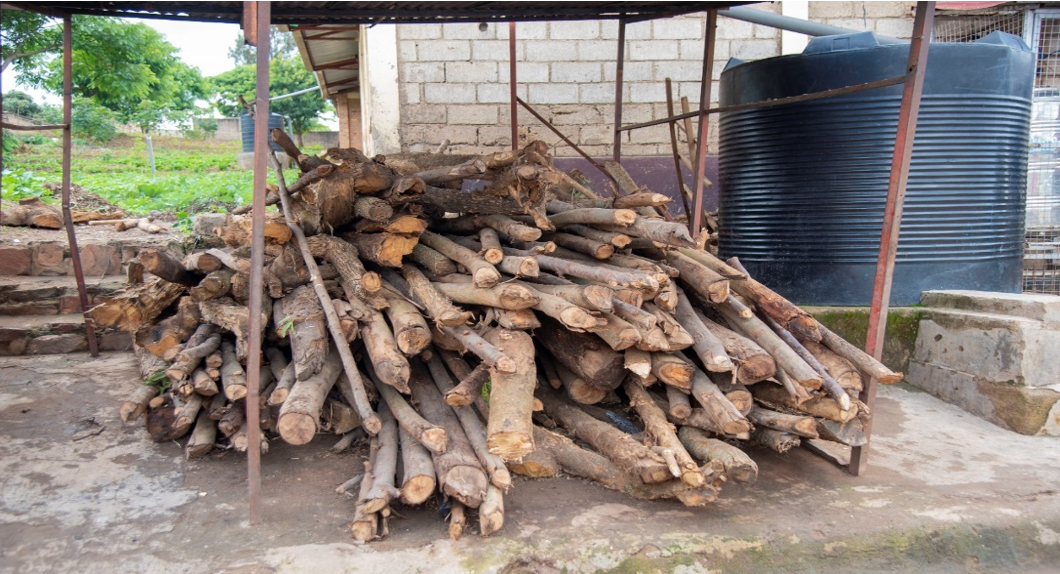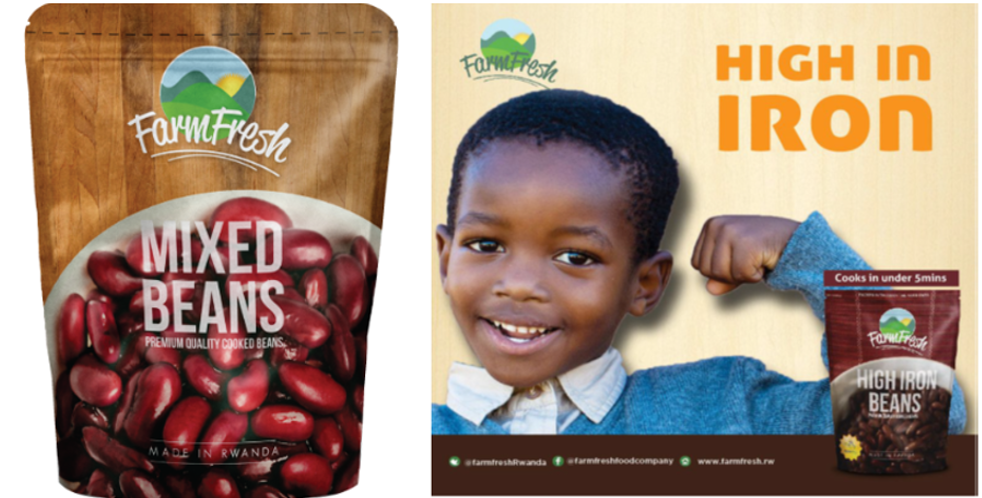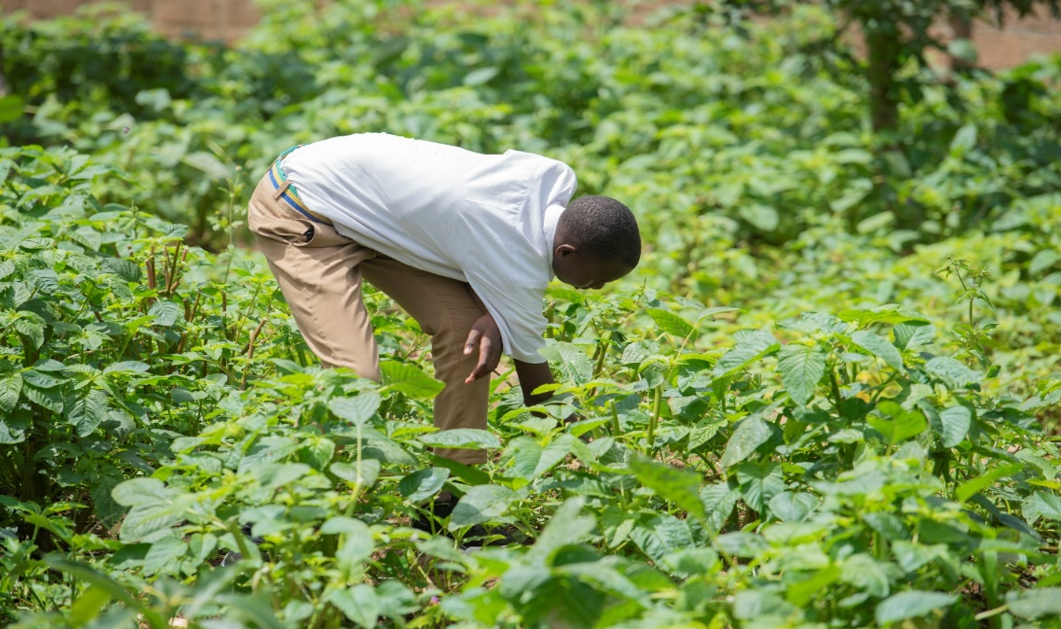By Yvonne Munyangeri, Eliud Birachi, & Jean Claude Rubyogo
Common beans have long been a cornerstone of the Rwandan diet, prized not only for their delicious versatility but also for their vital nutritional benefits. Rich in protein, iron, and essential micronutrients, beans are a key dietary staple that helps fuel the country’s population of about 14 million people. This deep-rooted preference has led Rwanda to achieve the highest per capita bean consumption worldwide, with each individual consuming 34 kgs annually on average. Considering the diverse array of bean varieties grown across the nation, the legume has become a symbol of both cultural tradition and nutritional importance, benefiting school-going children in different ways.
In Rwanda’s agricultural landscape, beans also play a crucial role. As the second most cultivated crop, they account for nearly 28% of the country’s total arable land. Smallholder farmers grow beans for both personal consumption and commercial sale, making them a vital crop for sustainable livelihoods, food security, and overall nutrition. Because of this, beans are not just a food, but a foundation of resilience in Rwanda’s rural communities, supporting both local economies and the nation’s long-term well-being.

Common beans (left) captured in a school’s storeroom and (right) Beans being cooked, while being mixed with vegetables
The central role of beans in the Rwandan diet has led to their inclusion as a key component of the country’s school feeding program. This initiative is part of the Government of Rwanda’s broader strategy to promote better nutrition among children and ensure they have access to healthy, balanced meals. In Rwanda, the school feeding program, which contributes to improved student attendance, cognition, and academic performance, currently serves 1.26 million primary school children. This includes 83,000 children in 104 schools across four districts facing high levels of poverty and food insecurity. The meals provided typically consist of porridge, rice, beans, vegetables, milk, and fruit, ensuring students receive essential nutrients for their growth and development. This program meets up to 30% of a child’s daily energy and macronutrient needs, and up to 70% of their micronutrient requirements. Each school is equipped with one plate, cup, and spoon per child, with an additional 10% to account for potential losses.
A study conducted by Alliance of Bioversity International and CIAT through the Pan-Africa Bean Research Alliance (PABRA-Africa) across 195 schools in three districts of Kigali, namely; Kicukiro, Gasabo, and Nyarugenge, under the Clifford Chance-funded “Sustainable School Feeding Innovations in Kigali (SSFI)” Project, found that beans are the most commonly served staple in schools, with 97% of schools offering them. Beans are typically served an average of five times a week, primarily at lunch and supper. Rice follows at 86%, and maize at 71%. The study also revealed that 100% of public and government-aided schools serve beans, while 92% of private schools include them in their meal offerings.
“Beans are very important to our school children’s health. They are an important source of protein, and they are served every day on meals,” states Jean Baptiste Habanabashaka, Headmaster at Groupe Scolaire (GS) Kimironko II in Gasabo District.
Addressing environmental challenges associated with school feeding
The school feeding program in Rwanda, while essential, has faced significant challenges. Among the schools that provide meals, 81% rely on firewood for cooking. In secondary schools, this figure approaches 99%, raising serious environmental concerns and undermining efforts toward sustainable agriculture. A recent study on biomass fuel dependency and its environmental impacts, conducted in three secondary schools, revealed that between 2015 and 2020, at least 6,771 cubic meters of firewood were used. This contributed to a decline in Rwanda’s forest cover from 24.6% to just 19.16% over the course of five years.
To address this issue, the SSFI Project was launched in collaboration with the Ministry of Education (MINEDUC), the City of Kigali, the Heads of Schools Organization (HOSO), and Farm Fresh, to promote environmental conservation by introducing processed food products that require less fuel and firewood to cook. The project also emphasizes climate-smart food varieties, such as beans, that are drought-tolerant, have short cooking times, and mature quickly.
Another SSFI study conducted in 195 schools across Kigali also found that firewood (85.6%) and charcoal (11.8%) are the primary sources of cooking energy for meals, including beans. The project focuses on reducing this reliance on traditional cooking fuels while ensuring that beans, a nutritional cornerstone, remain central to school meals.
Table 1: Showing the type of fuel used to cook dry beans in various schools
| Fuel type | Private | Public | Government | Overall | |
| % of schools | Number of schools | % of schools (n=195) | |||
| Firewood | 52.0 | 97.7 | 96.5 | 167 | 85.6 |
| Charcoal | 42.0 | 1.1 | 1.8 | 23 | 11.8 |
| Gas | 16.0 | 0.0 | 1.8 | 9 | 4.6 |
| Briquette/pellets | 0.0 | 1.1 | 0.0 | 1 | 0.5 |
The results also revealed a significant cost associated with the high reliance on biomass fuel for cooking in Kigali schools. Up to 40 hours per week are dedicated to cooking fuel, with a total of $29,453.40 spent on cooking wages. Of this, $19,770 is specifically allocated to cooking dry beans each month. Dry beans are cooked 5 to 7 times a week, with at least 52 tons of beans cooked every week. Additionally, 48.5 cubic meters of water are used daily to clean and cook beans across 195 schools.
This heavy dependence on biomass fuel presents a serious challenge to Rwanda’s environmental protection goals. These goals include reducing household biomass fuel use from 79.9% in 2017 to 42% by 2024, as well as committing to mitigate and adapt to the impacts of climate change. Specifically, Rwanda aims to achieve a 38% reduction in greenhouse gas emissions compared to business-as-usual projections by 2030, which translates to an estimated mitigation potential of up to 4.6 million tCO2e by that year.
Innovations to support school feeding program and environmental protection
The SSFI project aims to revolutionize school feeding programs by introducing pre-cooked beans, offering significant health, environmental, time, and cost benefits. As part of Rwanda’s broader commitment to promoting energy-efficient technologies, increasing access to clean cooking solutions, and achieving universal clean cooking by 2030, the adoption of pre-cooked beans represents a valuable step toward meeting the country’s targets for both households and schools.
A prime example of this innovation is Farm Fresh, a Rwandan food processing company based in Kigali that processes and packages pre-cooked beans, delivering them directly to schools. This initiative not only enhances the nutritional quality of meals but also contributes to environmental sustainability. The technology used in preparing and packaging these beans includes the use of liquefied petroleum gas (LPG) instead of traditional biomass, promoting clean cooking practices. Additionally, the beans are packaged in laminated pouches, which are both environmentally friendly and recyclable.
When comparing the costs, pre-cooked beans from Farm Fresh offer a more affordable and efficient alternative. While cooking dry beans using firewood or charcoal costs around 20,000 Rwf per meal (including water and salt), pre-cooked beans cost just 11,000 Rwf. Moreover, the pre-cooked beans can be stored for up to 12 months without the need for any additives, ensuring both convenience and cost-effectiveness.
“At our state-of-the-art production facility in the Kigali Special Economic Zone, we ensure that all our products adhere to the stringent standards set by the Rwanda Food and Drug Authority and the Rwanda Standards Board. We are also committed to supporting local smallholder bean farmers in Rwanda and providing schools with an efficient solution. Traditionally, schools spend hours preparing beans using firewood or charcoal. By offering competitively priced cooked beans, Farm Fresh helps schools reduce energy costs, enhance student nutrition, and promote environmental sustainability,” highlighted Marie Claire Nyirankundizanye, Production Manager at Farm Fresh Food Company Ltd.
Currently, Farm Fresh is supplying pre-cooked beans to 25 schools, each receiving 80kg of beans daily. With plans to expand its reach, the company is s teadily working to incorporate high-iron pre-cooked beans into school menus across Rwanda, supporting the country’s goal of improving nutrition while promoting sustainable, clean cooking solutions.
“Beans take a lot of firewood and time to cook. If pre-cooked beans could be adopted by all schools in Rwanda, the problem of biomass fuel would be solved easily,” says Jacqueline Uwitonze, Headmaster at Groupe Scolaire Gisasa.
In addition, the SSFI project is focused on helping schools improve both the yield and quality of crops grown in their school gardens. According to a recent study by PABRA through the SSFI project, 73% (145 out of 195) of schools have established gardens, primarily for food production (89%) and education (11%). Beans rank among the top three crops grown in these gardens, alongside vegetables and bananas. However, even in schools with up to 2 hectares of land, the current yields are insufficient to meet the schools’ needs. To address this, the SSFI project will provide targeted capacity-building on agronomy for school garden caretakers, with the goal of boosting the productivity of beans and vegetables, which are key components of the daily meals served to students.
By applying best agronomic practices, climate-smart agriculture, and providing access to climate information services for school garden caretakers, both the yield and quality of produce will improve. This, in turn, will help reduce the costs of school meals, allowing savings to be reallocated to address other pressing needs within the schools
Table 2: Crops produced in the school garden
| Crop | Season A | Season B | ||
| Number of schools | % of schools (n=143) | Number of schools | % of schools (n=143) | |
| Maize | 13 | 9.09 | 9 | 6.29 |
| Beans | 16 | 11.19 | 11 | 7.69 |
| Bananas | 15 | 10.49 | 14 | 9.79 |
| Sweet potatoes | 4 | 2.8 | 4 | 2.8 |
| Potatoes | 1 | 0.7 | 3 | 2.1 |
| Vegetables | 139 | 97.2 | 137 | 95.8 |
| Cassava | 4 | 2.8 | 4 | 2.8 |
| Other specify | 2 | 1.4 | 6 | 4.2 |
Despite the high energy, time and cost needed to prepare and cook dry beans to feed school children, the legume is a great contribution to the school feeding program in Rwanda as a source of protein, accessible, preferred, and delicious meal. Therefore, to reduce biomass fuel consumed in its preparation process and protection of environment, the adoption of pre-cooked beans in schools would be a potential and sustainable alternative.




